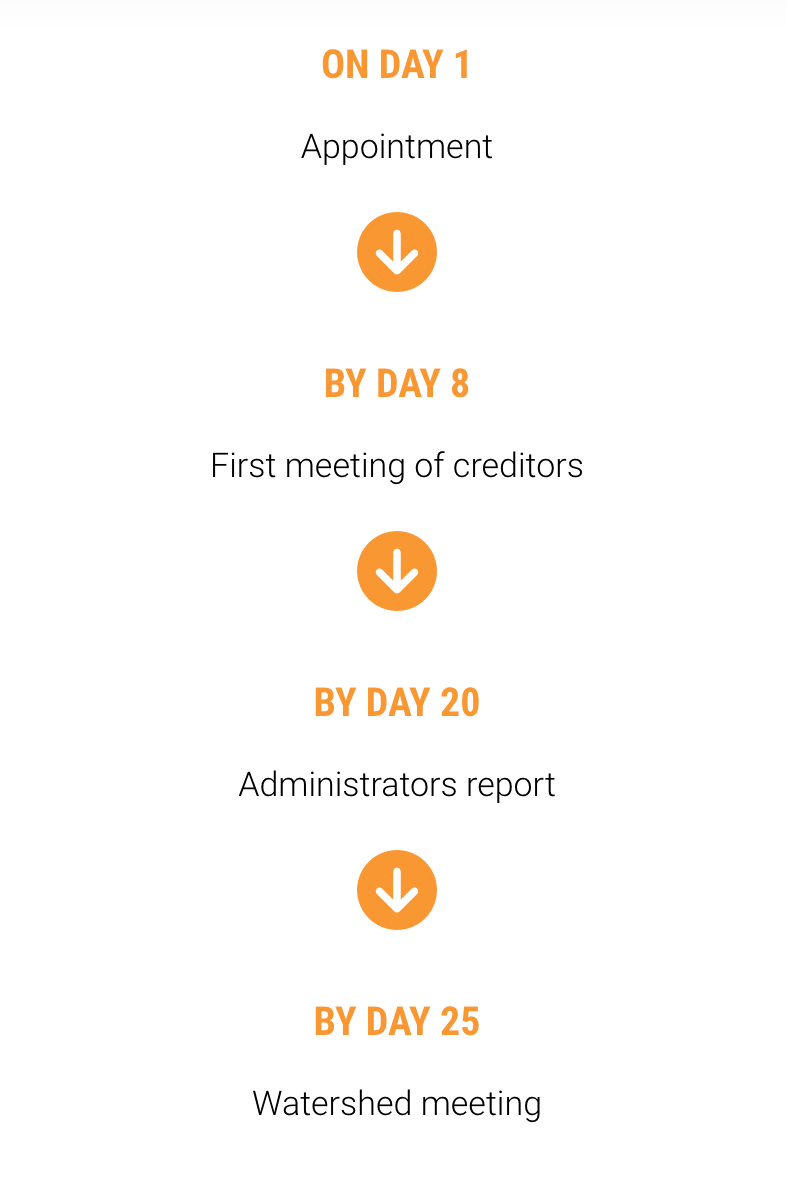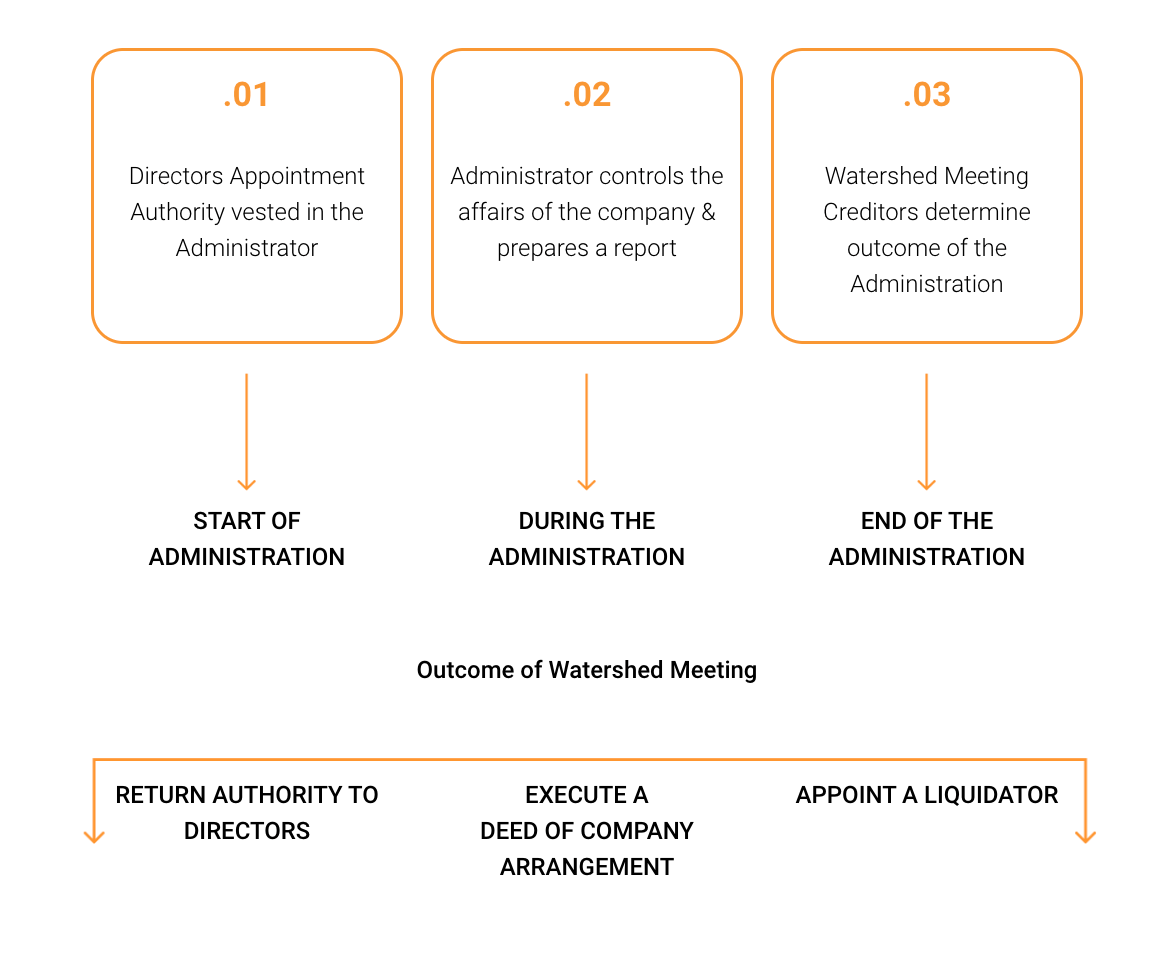The Voluntary Administration Process
Navigating financial distress is never easy, but for business owners or company directors carrying the hopes of employees, customers, and stakeholders, it is an even heavier weight to bear. Yet when debts mount, and the storm clouds gather, using the Voluntary Administration process can provide a valuable lifeline.
However, this is not a journey to embark upon alone. With an experienced insolvency practitioner to guide you, Voluntary Administration grants breathing space from creditor pressure and allows time to chart a new course toward financial recovery and business survival. And most importantly, avoiding the choppy waters of liquidation.
There is no doubt the Voluntary Administration process is complex and brings many technical and legal considerations. My decades in helping companies navigate these waters have taught me that with the proper support and an openness to change, Voluntary Administration can steer a business back from the brink toward calmer seas.
What is Voluntary Administration?
Voluntary Administration is a model law designed specifically for companies that are experiencing trouble but have the potential to turn around if restructuring can occur.
If your business now faces its own financial tempest, know that you need not face the storm alone. The information below outlines the Voluntary Administration process to give you an understanding of what to expect. Though the process of Voluntary Administration may be a challenging journey, it can be one that, in the long run, is very worthwhile.
 What to expect: The Voluntary Administration process
What to expect: The Voluntary Administration process
Day 1
Step 1: Appoint an Administrator
The first step is for the directors to appoint an administrator. This person must be a licensed insolvency practitioner with the experience to conduct a voluntary administration. To ensure this step is properly documented, a simple document is executed by the board of directors. This officially starts the voluntary administration process, and with the protection of VA in place, the company can see if the liquidation can be avoided.
Step 2: Gain Temporary Relief from Creditors
With the administrator appointed, you receive temporary relief from any legal claims and enforcement actions. Your company’s creditors cannot file further court actions to recover debts during administration without consent. This also applies to any personal guarantees signed on behalf of the company that are often signed by directors. This gives you vital breathing room.
By Day 8
Step 3: First Meeting of Creditors
The administrator must hold the first creditors’ meeting within eight days after being appointed. Here, they will discuss the company’s situation and will give creditors an opportunity to appoint a committee of creditors to work with the administrator throughout the process. The administrator advises if they think the company can trade its way out or should proceed to liquidation.
Step 4: The Administrator Investigates the Business
Over the next 13 days, the administrator thoroughly investigates the company’s affairs, including assets, liabilities, contracts, and more. They will assess restructuring and reform options that are viable for saving the business. Any turnaround plan must satisfy creditors.
By Day 20
Step 5: Receive the Administrator’s Report
On day 20 of the administration, creditors will receive the administrator’s report outlining proposals for the company moving forward. They may suggest a deed of company arrangement (DoCA), restructuring the company to emerge from external administration as a going concern. If no proposals seem viable, liquidation is likely suggested.
Creditors will be provided with three options that they may vote on, either at the Watershed meeting or by postal vote if they are unable to attend. These options are:
- Return the company to the hands of the director
- Execute a DoCA
- Liquidate the company.
The administrator will provide his opinion as to the best course as action, and his reasons for that opinion.
Day 25
Step 6: Watershed Meeting with Creditors
No more than 25 days into the Voluntary Administration, a watershed meeting takes place between company directors, the administrator, and creditors. Creditors vote whether to accept the administrator’s proposal, negotiate an alternative agreement, or proceed to liquidate the company. If a Deed of Company Arrangement (DoCA) is recommended, the terms will be spelt out in the administrator’s report. A DoCA is the agreement reached between the company and its creditors setting out how the company can continue to trade. Whatever the outcome, it ends the Voluntary Administration process.
Note that the watershed meeting may be adjourned by up to 30 days after the Watershed meeting with creditors’ approval or longer by approval by the high court. If an administrator wishes to adjourn a meeting, they will typically notify the creditors via the administrators report, and it will be voted on at the Watershed meeting. If that vote is successful, no other voting will take place and the meeting will effectively end and reconvene at the proposed date.
Step 7: Implement the Creditors’ Decision
If the administrator has proposed a DoCA, they will typically send the Deed alongside the Administrators report for creditors consideration. This deed will include such things as the terms under which the company will continue to operate, the nature and duration of the moratorium period, as well as the circumstances under which the DoCA will terminate. All creditors become bound by the DoCA, regardless of whether they have voted or not, so it pays it have your say if you feel strongly about whether or not it should be executed.
If liquidation was approved, however, the administrator becomes a liquidator and proceeds to wind up company operations.

Avoiding Voluntary Administration if Liquidation proceedings have begun
The key is acting swiftly when challenges emerge. If liquidation proceedings have already commenced when you appoint an administrator, you have just ten working days to initiate Voluntary Administration or lose control altogether. So don’t delay if adversity strikes. There are always options for determined directors willing to fight for their company’s survival.

Undoubtedly, the process of Voluntary Administration suggests you will be in for a stressful timeline. With an experienced administrator guiding you, there is hope of easing your burden and emerging stronger than before.
BWA Insolvency has been helping businesses facing financial challenges since 1994. If you would like to explore options for voluntary administration, contact us today for a confidential, no-obligation chat.


